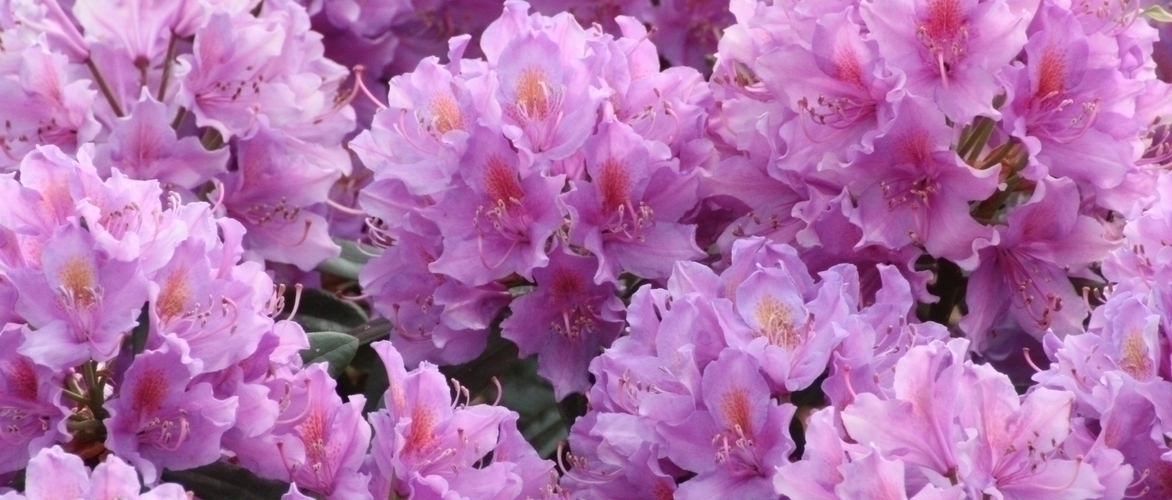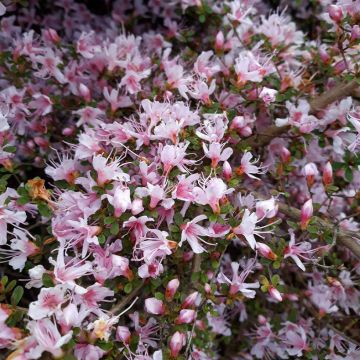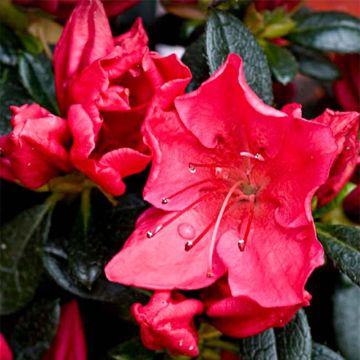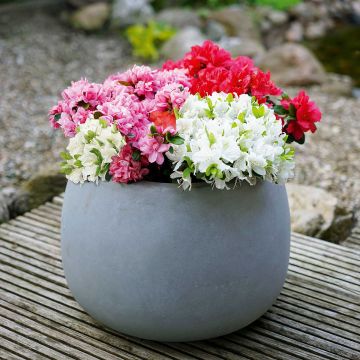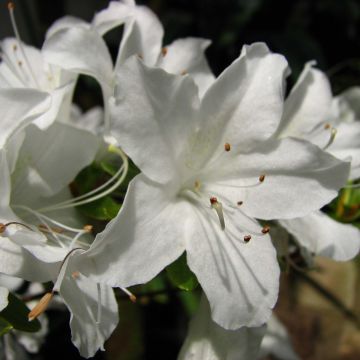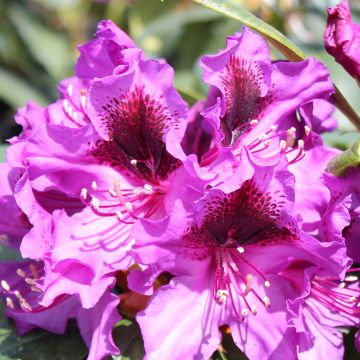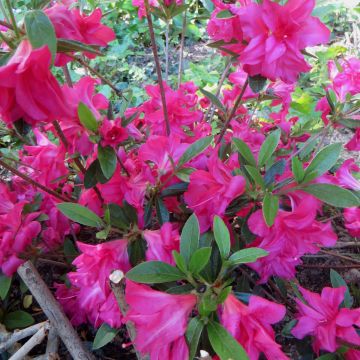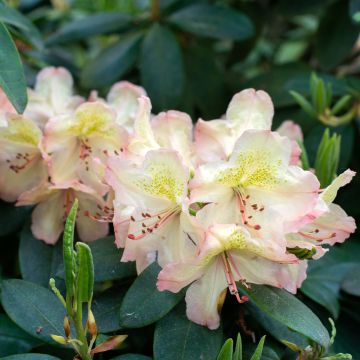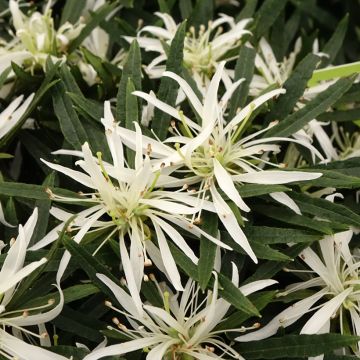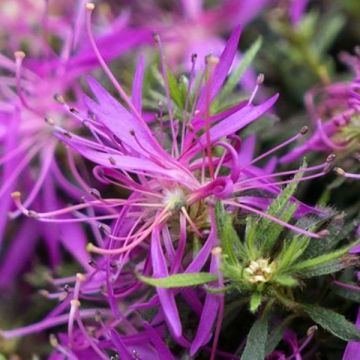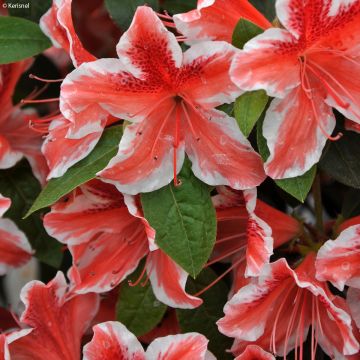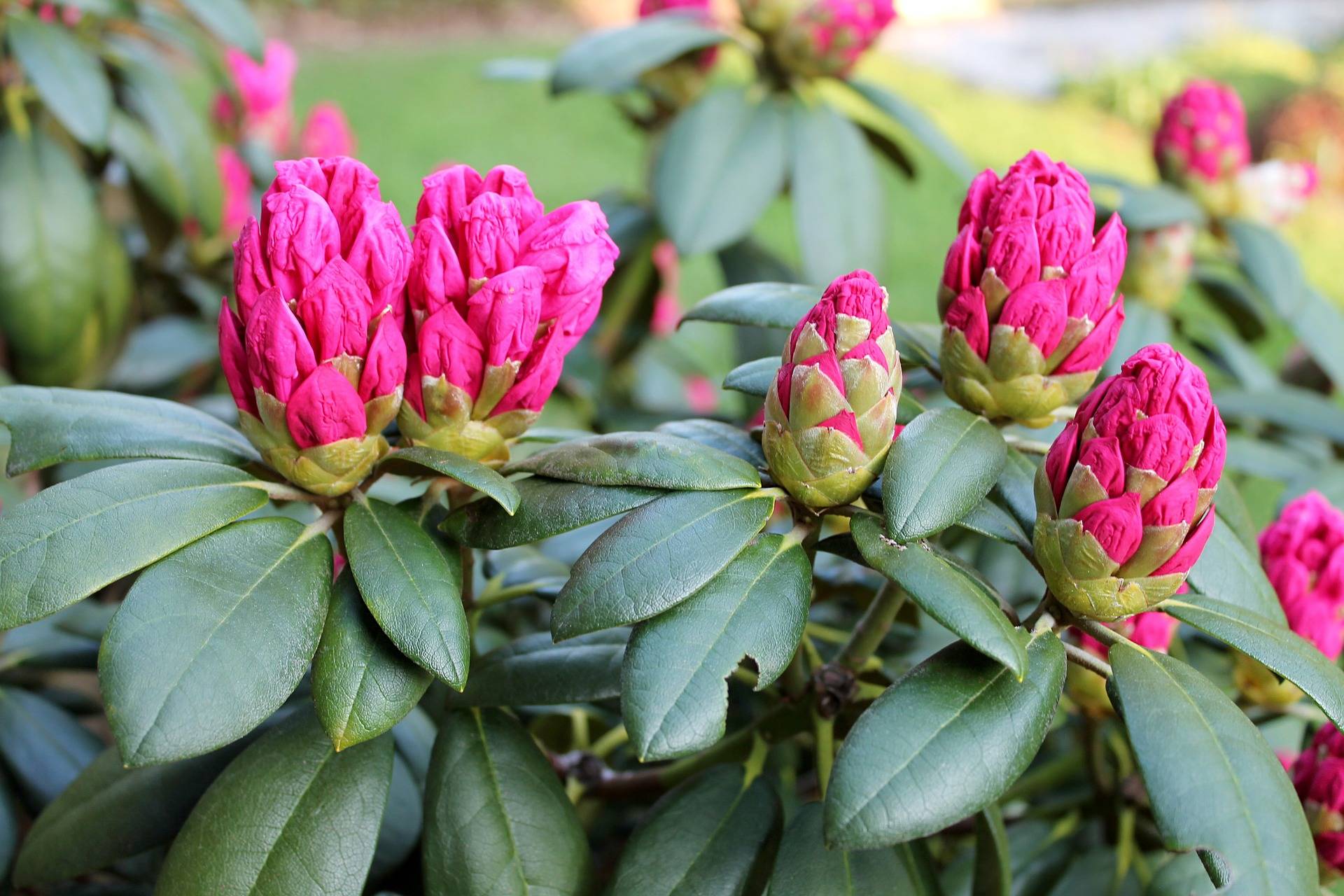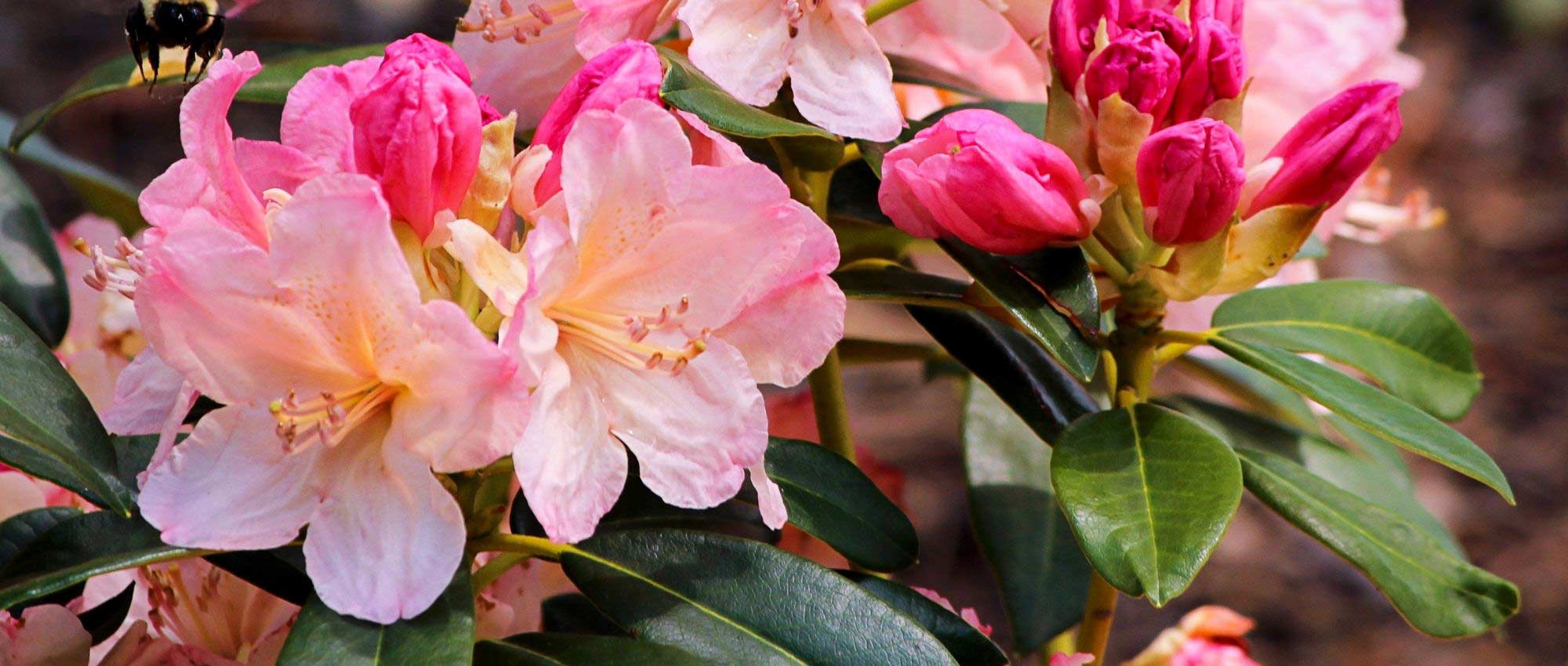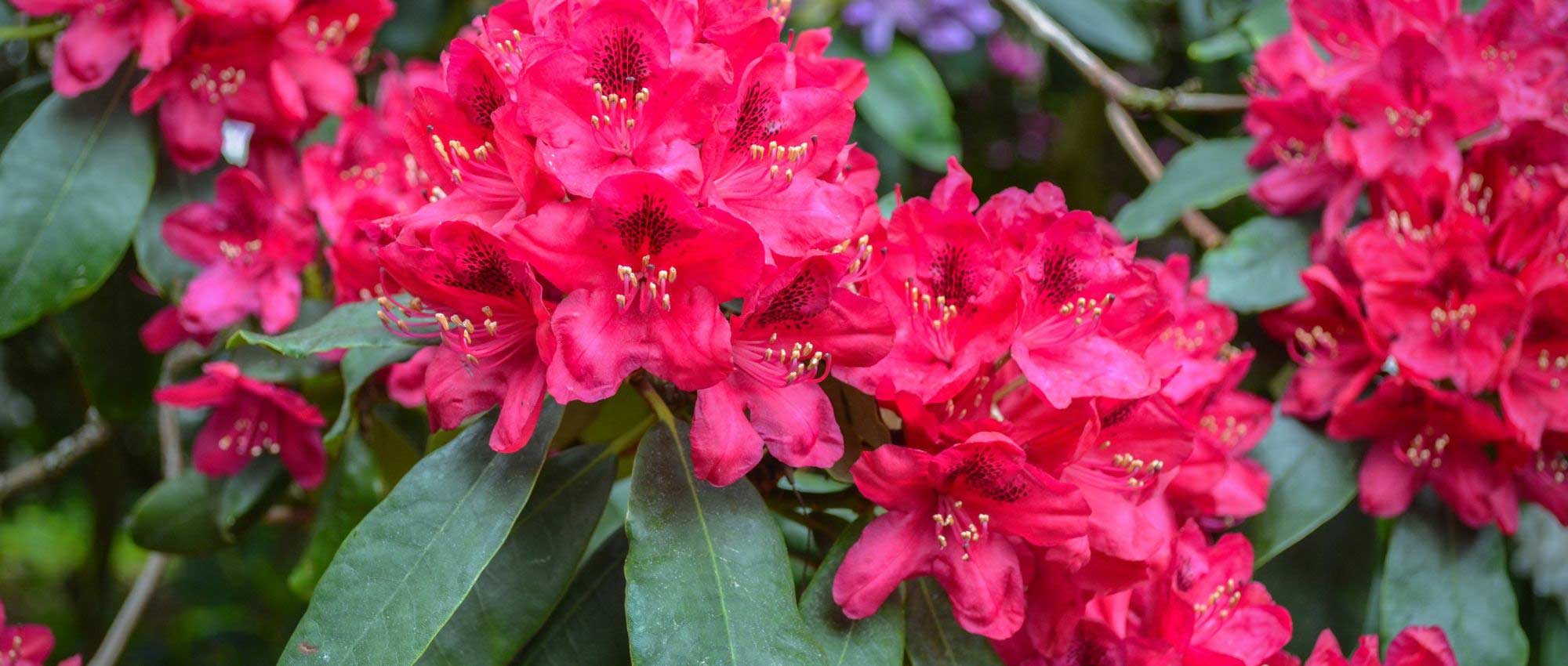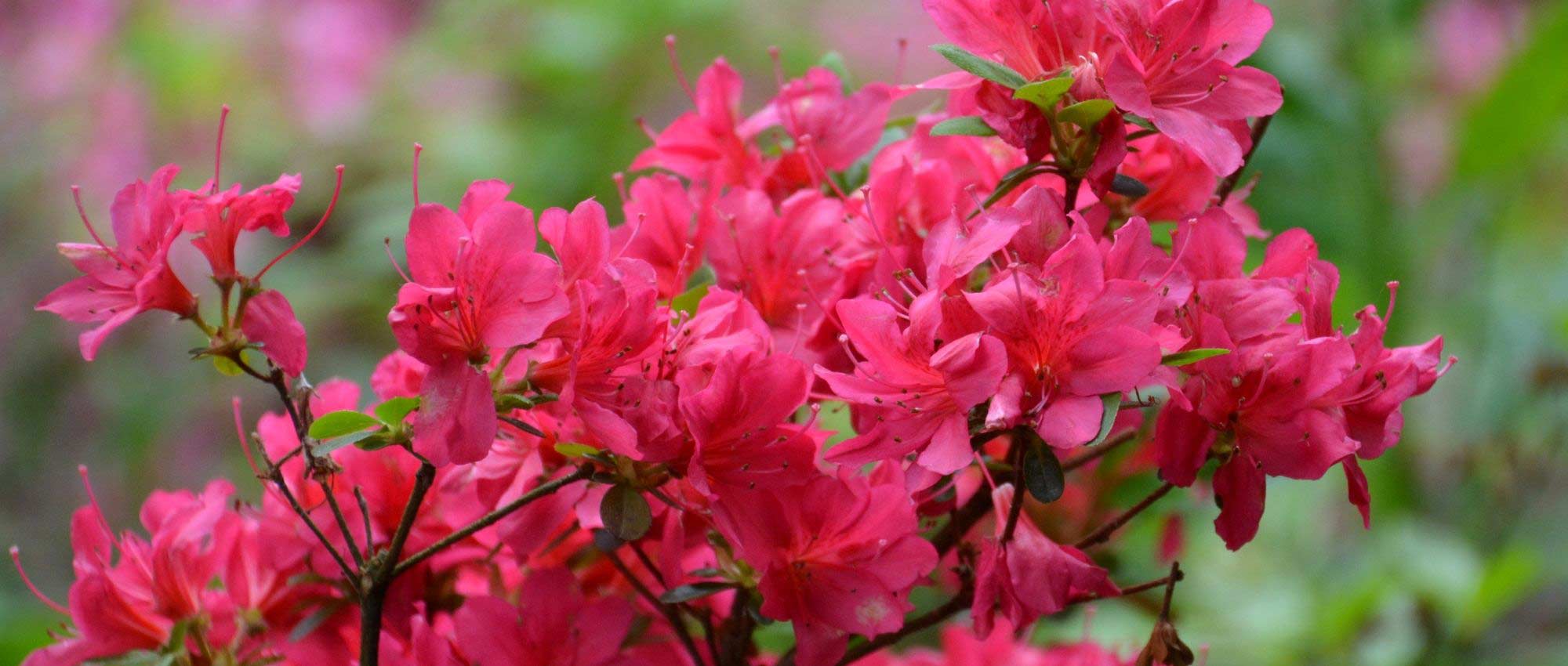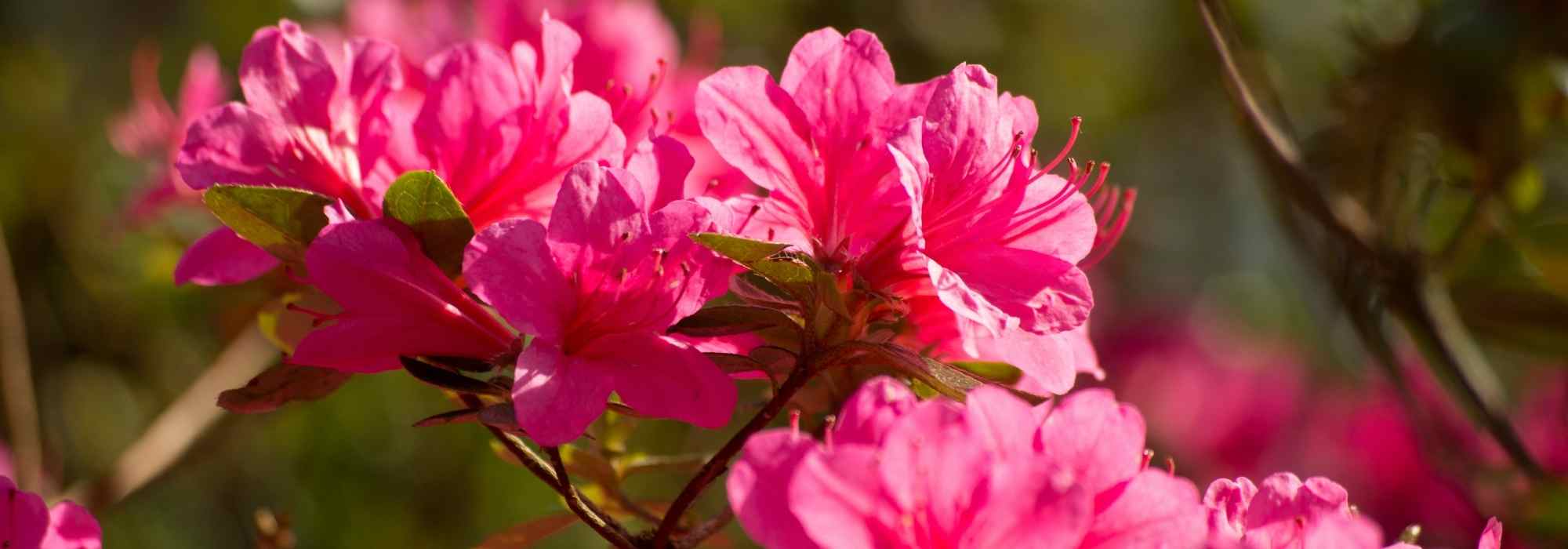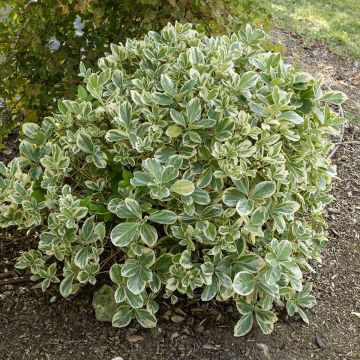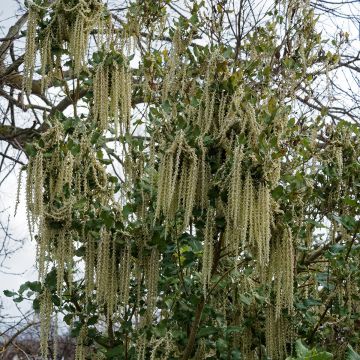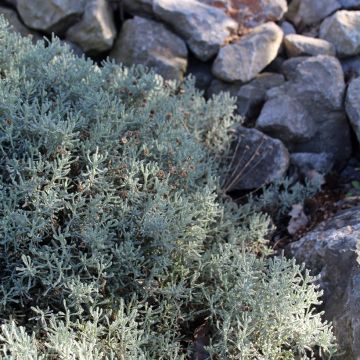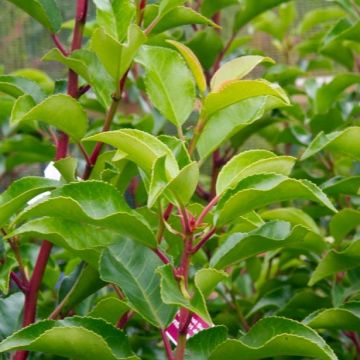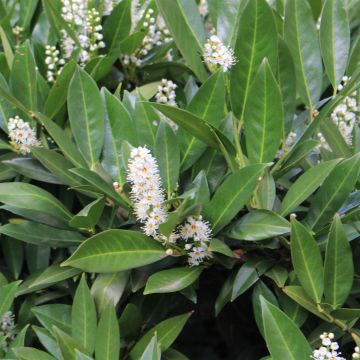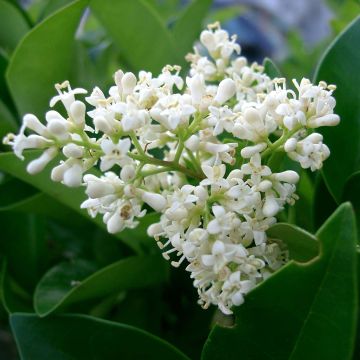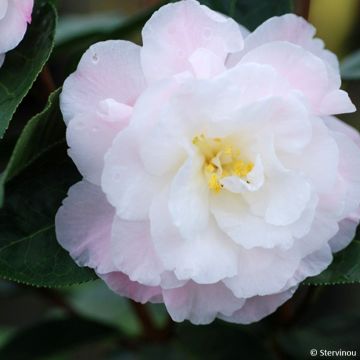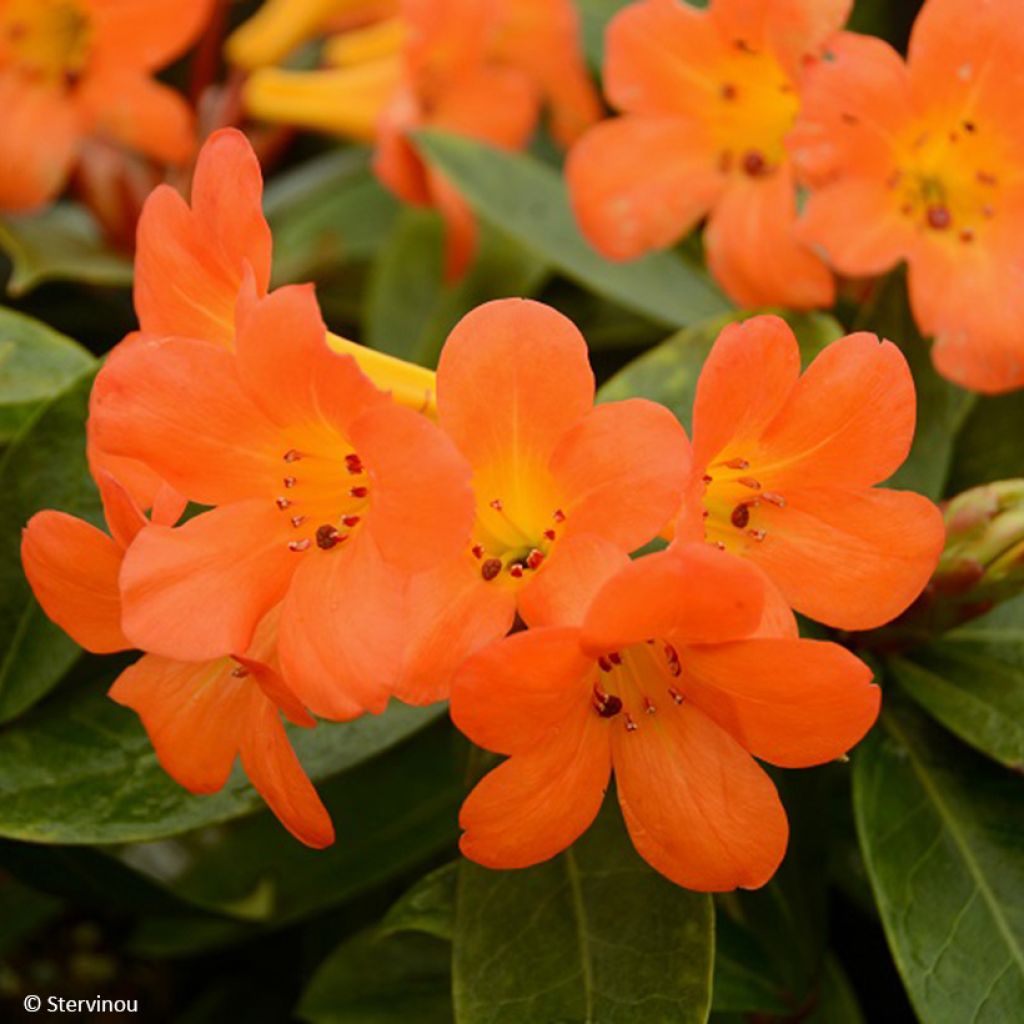

Rhododendron vireya Vladimir Bukovski - Tropical Rhododendron
Rhododendron vireya Vladimir Bukovski - Tropical Rhododendron
Rhododendron Vladimir Bukovski
Tropical Rhododendron
Special offer!
Receive a €20 voucher for any order over €90 (excluding delivery costs, credit notes, and plastic-free options)!
1- Add your favorite plants to your cart.
2- Once you have reached €90, confirm your order (you can even choose the delivery date!).
3- As soon as your order is shipped, you will receive an email containing your voucher code, valid for 3 months (90 days).
Your voucher is unique and can only be used once, for any order with a minimum value of €20, excluding delivery costs.
Can be combined with other current offers, non-divisible and non-refundable.
Home or relay delivery (depending on size and destination)
Schedule delivery date,
and select date in basket
This plant carries a 24 months recovery warranty
More information
We guarantee the quality of our plants for a full growing cycle, and will replace at our expense any plant that fails to recover under normal climatic and planting conditions.
Does this plant fit my garden?
Set up your Plantfit profile →
Description
Rhododendron 'Vladimir Bukovski' is an Australian hybrid that forms an evergreen bush, slightly larger than other varieties in this group of tropical plants. Its beautiful glossy dark green foliage serves as a backdrop for its incredibly bright flowering. In autumn and winter, it produces trumpets of bright orange with a yellow throat. This highly ornamental, uncommon Rhododendron is frost-sensitive and needs to be grown in a pot, in moist and well-drained substrate, and under light shade. It should be overwintered in a bright frost-free room to protect it during the cold season.
Rhododendron belongs to the Ericaceae family, of which it is an important member, alongside about a hundred other often highly ornamental genera, such as Kalmias (or Mountain Laurels) with magnificent blooms, Heather, and Pieris or Japanese Andromedas. There are approximately 850 species of Rhododendron, which justifies a rather complex botanical taxonomy, divided into subgenera, sections, and subsections. More than a third of the recorded species are of tropical origin and are grouped in the Vireya section (named after a French pharmacist, Julien-Joseph Virey, 1775-1846). Frequently epiphytic, growing on trees like many orchids in warm countries, these Rhododendrons that we are less familiar with tend to bloom almost all year round in their Southeast Asian homelands.
'Vladimir Bukovski' is a horticultural variety from 1968 created by Australian breeder Tom Lelliott. It is the result of a cross between Rhododendron laetum, an Indonesian and New Guinean species that forms a 3m tall shrub with yellow flowers, and the Malaysian variety 'Souvenir de J.H. Mangles', with orange-red flowers. The result of this cross is a beautiful shrub 70cm to 80cm tall and wide, reaching 1m in maturity, with tiered growth. The bright green foliage is particularly decorative when contrasting with the red young stems. As they mature, these stems turn green, while the leaves darken. Measuring 9 to 11.5cm long and 4.5 to 5cm wide, they have an elliptical shape and spread almost horizontally, carried by short petioles.
Flowering occurs in autumn and often continues into winter, in the form of clusters of 7 to 12 brightly coloured flowers. Resembling small trumpets, 4.5cm in diameter and 5.5cm long, their tubular base is formed by the fused tips of the petals, typical of Ericaceae (these are called gamopetalous flowers in this case). The other end opens into five rounded lobes, of an incredibly bright orange colour, almost fluorescent against the dark green background of the foliage. The throat is closer to yellow and punctuated by the dark red anthers of the cluster of stamens that emerge from the corolla's centre.
Rhododendron 'Vladimir Bukovski' is even more cold-sensitive than other Vireya varieties and can tolerate only very brief frosts of around -1°C to -2°C. Therefore, it should be grown in a container so that it can be brought indoors to a frost-free conservatory or any other bright sheltered place in winter. Pair it with other cold-sensitive plants with a tropical appearance to create an original scene. The Black-eyed Susan vine (Thunbergia alata) can be one of them, which you can grow as an annual or a perennial by also bringing it indoors for winter protection. Provide it with a trellis in a container, and it will quickly cover it with its luxuriant foliage, offering you its bright yellow flowers with a dark central spot throughout the summer season. Grevillea poorinda 'Rondeau' will also be a good companion, with its dark evergreen foliage and long-lasting bright red-pink flowering, evoking distant lands. Another plant with exotic charm, the Pink Cuphea 'Twinkle Pink', is a dense perennial with curious pink tubular flowers, topped with 6 delicate petals of light purple, which will further enhance the ambiance you have created.
Plant habit
Flowering
Foliage
Botanical data
Rhododendron
Vladimir Bukovski
Ericaceae
Tropical Rhododendron
Cultivar or hybrid
Other Small Rhododendron
View all →Planting and care
Rhododendron 'Vladimir Bukovski' is a tropical variety that is not very hardy and can only tolerate brief and light frosts, around -1°C to -2°C. Therefore, it must be grown in a pot and protected from the cold during winter. Plant it in a pot with a diameter of about thirty centimetres to start, and after a few years, repot it in a slightly larger container. Use an acidic planting soil (pH 5 to 6) that is well-draining, and optionally add a layer of non-limestone gravel at the bottom. Make sure the substrate remains moist, but not excessively so, as it could cause the roots to rot.
When you take it outdoors after the last frosts, choose a partially shaded location, under plants that can maintain a certain level of humidity in the air through their evapotranspiration. Avoid windy and drying areas, and in hot periods, mist around the plant from time to time. Regularly remove faded flowers to prolong the flowering period. In autumn, bring your Rhododendron inside, to a bright and frost-free room (such as a conservatory), as soon as the nighttime temperatures drop to around +5°C.
Vireya Rhododendrons are fairly resistant to diseases (as long as good drainage is provided to avoid water stagnation in the pot) and are not heavily attacked by insects. However, occasionally inspect the foliage to ensure it is healthy.
Planting period
Intended location
Care
Planting & care advice
This item has not been reviewed yet - be the first to leave a review about it.
Similar products
Haven't found what you were looking for?
Hardiness is the lowest winter temperature a plant can endure without suffering serious damage or even dying. However, hardiness is affected by location (a sheltered area, such as a patio), protection (winter cover) and soil type (hardiness is improved by well-drained soil).

Photo Sharing Terms & Conditions
In order to encourage gardeners to interact and share their experiences, Promesse de fleurs offers various media enabling content to be uploaded onto its Site - in particular via the ‘Photo sharing’ module.
The User agrees to refrain from:
- Posting any content that is illegal, prejudicial, insulting, racist, inciteful to hatred, revisionist, contrary to public decency, that infringes on privacy or on the privacy rights of third parties, in particular the publicity rights of persons and goods, intellectual property rights, or the right to privacy.
- Submitting content on behalf of a third party;
- Impersonate the identity of a third party and/or publish any personal information about a third party;
In general, the User undertakes to refrain from any unethical behaviour.
All Content (in particular text, comments, files, images, photos, videos, creative works, etc.), which may be subject to property or intellectual property rights, image or other private rights, shall remain the property of the User, subject to the limited rights granted by the terms of the licence granted by Promesse de fleurs as stated below. Users are at liberty to publish or not to publish such Content on the Site, notably via the ‘Photo Sharing’ facility, and accept that this Content shall be made public and freely accessible, notably on the Internet.
Users further acknowledge, undertake to have ,and guarantee that they hold all necessary rights and permissions to publish such material on the Site, in particular with regard to the legislation in force pertaining to any privacy, property, intellectual property, image, or contractual rights, or rights of any other nature. By publishing such Content on the Site, Users acknowledge accepting full liability as publishers of the Content within the meaning of the law, and grant Promesse de fleurs, free of charge, an inclusive, worldwide licence for the said Content for the entire duration of its publication, including all reproduction, representation, up/downloading, displaying, performing, transmission, and storage rights.
Users also grant permission for their name to be linked to the Content and accept that this link may not always be made available.
By engaging in posting material, Users consent to their Content becoming automatically accessible on the Internet, in particular on other sites and/or blogs and/or web pages of the Promesse de fleurs site, including in particular social pages and the Promesse de fleurs catalogue.
Users may secure the removal of entrusted content free of charge by issuing a simple request via our contact form.
The flowering period indicated on our website applies to countries and regions located in USDA zone 8 (France, the United Kingdom, Ireland, the Netherlands, etc.)
It will vary according to where you live:
- In zones 9 to 10 (Italy, Spain, Greece, etc.), flowering will occur about 2 to 4 weeks earlier.
- In zones 6 to 7 (Germany, Poland, Slovenia, and lower mountainous regions), flowering will be delayed by 2 to 3 weeks.
- In zone 5 (Central Europe, Scandinavia), blooming will be delayed by 3 to 5 weeks.
In temperate climates, pruning of spring-flowering shrubs (forsythia, spireas, etc.) should be done just after flowering.
Pruning of summer-flowering shrubs (Indian Lilac, Perovskia, etc.) can be done in winter or spring.
In cold regions as well as with frost-sensitive plants, avoid pruning too early when severe frosts may still occur.
The planting period indicated on our website applies to countries and regions located in USDA zone 8 (France, United Kingdom, Ireland, Netherlands).
It will vary according to where you live:
- In Mediterranean zones (Marseille, Madrid, Milan, etc.), autumn and winter are the best planting periods.
- In continental zones (Strasbourg, Munich, Vienna, etc.), delay planting by 2 to 3 weeks in spring and bring it forward by 2 to 4 weeks in autumn.
- In mountainous regions (the Alps, Pyrenees, Carpathians, etc.), it is best to plant in late spring (May-June) or late summer (August-September).
The harvesting period indicated on our website applies to countries and regions in USDA zone 8 (France, England, Ireland, the Netherlands).
In colder areas (Scandinavia, Poland, Austria...) fruit and vegetable harvests are likely to be delayed by 3-4 weeks.
In warmer areas (Italy, Spain, Greece, etc.), harvesting will probably take place earlier, depending on weather conditions.
The sowing periods indicated on our website apply to countries and regions within USDA Zone 8 (France, UK, Ireland, Netherlands).
In colder areas (Scandinavia, Poland, Austria...), delay any outdoor sowing by 3-4 weeks, or sow under glass.
In warmer climes (Italy, Spain, Greece, etc.), bring outdoor sowing forward by a few weeks.






























